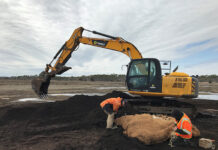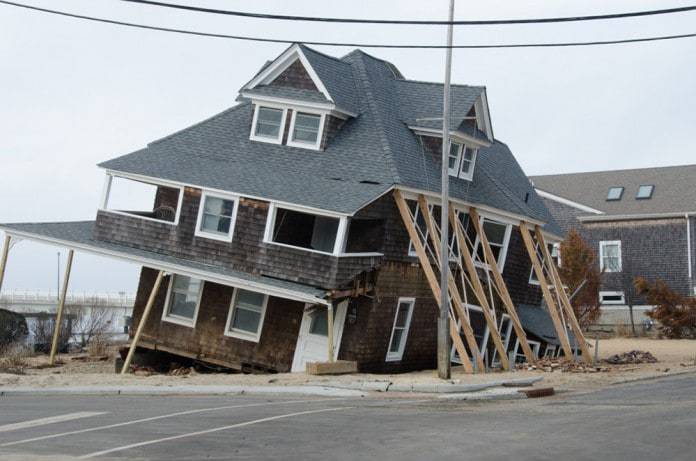
All along the Jersey Shore today, locals reminisce about that major storm of 2012, calling it “Sandy,” like a familiar old friend. But Superstorm Sandy was no friend to the Jersey Shore.
Let’s look at the figures: A 2013 survey conducted by Monmouth University in the wake of Superstorm Sandy estimated that 56 percent of New Jersey coastal homes and businesses suffered great damage from the storm. Of that number, one in ten reported that their property was totaled.
A five-year anniversary report by CNBC counted 117 lives lost to Sandy from the Jersey Shore up through New York, as well as $62 billion in damage.
The Monmouth University survey additionally measured the preparation factor, claiming that 62 percent of New Jersey coastal residents were completely caught off guard by the strength of Superstorm Sandy, reporting that it was much more serious than they had expected.
One can glean from these figures that Superstorm Sandy slammed into the Jersey shore with a force that we were somewhat unprepared for and wreaked a devastating amount of havoc that has taken us years to recover from.
It is now 2019, seven years after Sandy’s wrath. Most towns and communities have made a full recovery from Sandy.
The question is now this: “Are we prepared for the next one?”
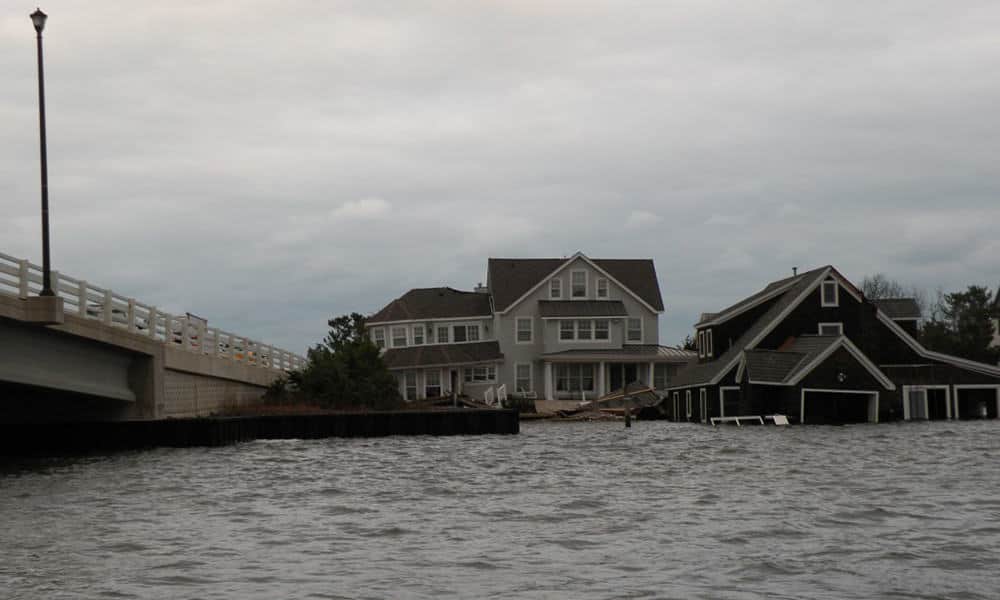
Hurricane Season
Hurricane season along the east coast lasts from June 1 through November 30, according to the National Hurricane Center (NHC). NHC data collected between 1966 and 2009 on the progress of the average Atlantic hurricane season shows that by the end of the annual hurricane season, the east coast on average will have seen approximately 11 “named systems” and six hurricanes, two of which were category three or higher.
While Atlantic hurricane season kicks off in June, it doesn’t typically ramp up until the end of August or early September, NHC data shows.
The US Department of Homeland Security’s website Ready.gov emphasizes that hurricanes are most active September.
“Potential threats from hurricanes include powerful winds, heavy rainfall, storm surges, coastal and inland flooding, rip currents, tornadoes, and landslides.”
Superstorm Sandy began as a hurricane (aka tropical cyclone) but was later renamed to “Post-Tropical Cyclone Sandy,” according to the National Oceanic and Atmospheric Administration (NOAA).
“But to those whose lives were devastated – it will always be remembered as super storm Sandy,” stated the NOAA.
Whereas a few months back the NOAA called for a “near-normal” hurricane season in 2019, this has recently been upgraded to “above-average.”
The NOAA defines near-normal as a dozen named storms and six hurricanes, three of which reach the category 3 level.
On August 8, a notice from the NOAA informed that “conditions are now more favorable for above-normal hurricane activity,” which means we can expect anywhere from 10 to 17 named storms, five to nine hurricanes.
Hurricane Preparation
Hurricane preparedness means being informed.
The Federal Emergency Management Administration (FEMA) published a guide on “How to Prepare for a Hurricane,” which splits hurricane response into three categories: Now, During, and After.
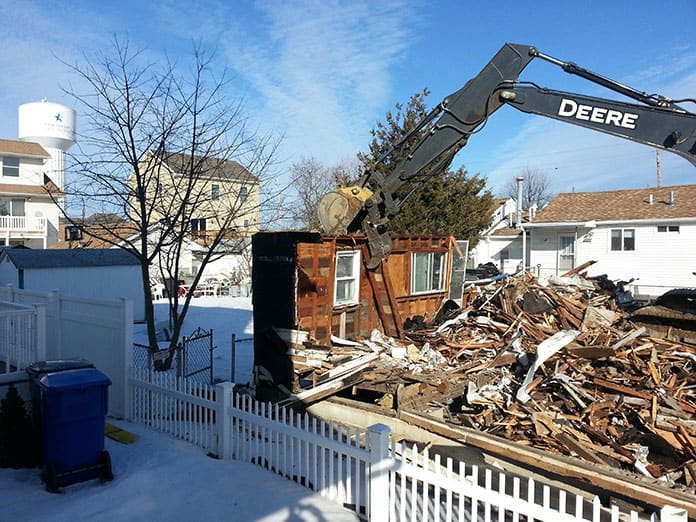
The “Now” calls for preparation:
Sign up for local alerts and warnings: You can sign up for severe weather alerts and hurricane specific information from the National Weather Service at weather.gov/enterprise/. The National Weather Service (NWS) provides alert and warning information through official dissemination sources, including NOAA Weather Radio, NOAA Weather Wire Service, and Weather.gov to the public. You can also sign up for Nixle alerts from your local police department or sheriff’s department for information closer to home.
Prepare to evacuate: Test your emergency communication plans, learn evacuation routes, have a place to stay. The NJ Office of Emergency Management offers up information on evacuation routes all over the state at ready.nj.gov/plan-prepare/evacuation-routes.shtml.
Have a “go bag”: Ready.gov outlines the necessities for the Basic Disaster Supplies Kit as
- Water – one gallon of water per person per day for at least three days, for drinking and sanitation
- Food – at least a three-day supply of non-perishable food
- Battery-powered or hand crank radio and a NOAA Weather Radio with tone alert
- Flashlight
- First aid kit
- Extra batteries
- Whistle to signal for help
- Dust mask to help filter contaminated air and plastic sheeting and duct tape to shelter-in-place
- Moist towelettes, garbage bags and plastic ties for personal sanitation
- Wrench or pliers to turn off utilities
- Manual can opener for food
- Local maps
- Cell phone with chargers and a backup battery
For the extra-prepared, additional emergency supplies can include prescription medications, pet food, travelers’ checks, important family documents, or sleeping bags, among other items. A full list can be found at ready.gov/build-a-kit.
Stock emergency supplies: As with the “go bag” make sure to have the necessary supplies on hand in the event of an emergency.
Protect critical documents and records: FEMA recommends safeguarding the following documents in a fireproof lock box or safe, a safety deposit box or something as simple as a three-ring binder.
- Vital Records: Driver’s licenses, birth certificates, adoption papers, Social Security cards, passports, citizenship papers, marriage license, divorce decrees, child custody papers, current military ID, military discharge (DD Form 214), medical and vaccination records for pets along with current photos and ID chip numbers in case you are separated.
- Insurance Policies: have at least the policy number and insurance company contact information for each type of coverage.
- Property Records: Real estate deeds of trust and mortgage; rental agreement or lease; auto/boat/RV registration and titles; video, photos or a list of household inventory.
- Medical Information: Immunization and other medical records, prescription information (drug name and dosage), health insurance identification cards, physician names and phone numbers, powers-of-attorney for health care, and living wills.
- Estate planning documents: Wills, trusts, funeral instructions, powers-of-attorney, attorney names and phone numbers.
- Financial records: First two pages of your previous year’s federal and state tax returns, stock and bond certificates, investment records, brokerage and retirement account information, credit card, checking and savings account numbers, contact information for credit unions, banks, financial institutions, credit card companies and financial advisers.
FEMA’s “During” protocol simply follows one credo: Survive. This means:
- Follow guidance from local authorities
- Evacuate if necessary
- Move to higher ground
- Steer clear of windows, seek shelter
- Never walk or drive in flooded waters
- Call 9-1-1 if in danger.
Lessons Learned
On the local level, many officials believe we have learned a lesson from Sandy and are more equipped to weather the next storm.
Ocean County: Ocean County Sheriff Michael Mastronardy said county staff train and prepare throughout the year for any kind of emergency. For example, a shelter in place drill. A significant part of planning has to do with keeping lines of communication open between local and regional emergency teams, so that everyone is on the same page. When there are hurricane warnings, there are certain protocols that are called into effect.
There are pictures and video taken of the shoreline before an impending storm to compare it to any kind of erosion that might take place, he said. This way, if there is a beach replenishment program, they know what to do in order to get the shoreline back to pre-storm conditions.
The Community Emergency Response Team (CERT) is a volunteer organization that would be called into duty to maintain the shelters. Throughout the year, they regularly check in on vehicles that are only called in on an emergency, like the surplus military troop transport. They are started up and maintained because if they lay dormant too long, they might not work when they are needed, he said.
Southern Ocean: Stafford Township, located right off the bridge to Long Beach Island, was one of many southern Ocean County towns to be hit hard by Sandy. Stafford Township’s Police Chief Thomas Dellane, who also serves as the township’s Emergency Management Coordinator, believes Stafford is prepared for the next blow, whenever that may be.
“Our Emergency Operations Plan has been developed in conjunction with both the NJ State Police and Ocean County Offices of Emergency Management,” said Dellane. “The plan is a living document that addresses issues such as continuity of operations planning, evacuations and sheltering and is updated on a regular basis.”
Stafford’s emergency plan was implemented during both Superstorm Sandy and Hurricane Irene. In the aftermath, officials took a look at how the plan worked well and where it might have failed.
“Debriefings after both events identified areas where we could strengthen our performance and modifications were made to improve the delivery of services to our residents,” Dellane explained.
For example, since Sandy, Stafford noticed the need for improvement in communications and information technology. Both of these were upgraded after Hurricane Irene and again after Superstorm Sandy, said Dellane.
The township also discovered that its fleet of military surplus Humvees designated for evacuation purposes was not up to par when put to the test.
“We discovered during Superstorm Sandy that these vehicles were not appropriate to evacuate residents from flooded areas of town. After the storm we upgraded the vehicles to 5 ton military surplus vehicles that were acquired at no cost to the township,” Dellane explained. “These vehicles are much more appropriate for high water rescues and evacuations.”
Similar to federal agencies like FEMA and Homeland Security, Dellane asserts that staying informed is the best method of preparation.
“Part of the preparation for the public is to create a communications plan that entails keeping a written record of all important phone numbers and designating an individual outside of the state to serve as a family point of contact in case people become separated during the storm,” he said.
Dellane added that it was as recent as this year that Stafford Police assisted in reconnecting a local family with close friends whose home was lost during Superstorm Sandy.
“The friends lost all their possessions in the storm including their cell phones and were forced to relocate to temporary housing after the storm and they had not communicated in over 5 years since the storm,” he said.
In order to be informed, residents can register their phones with the Code Red Emergency Notification system at staffordnj.gov/302/Emergency-Notification-System. This was implemented as yet another improvement following Sandy after officials realized that the township’s Code Red Emergency Notification system phone number database only included landline telephone numbers.
“As a result, our evacuation orders were not reaching everyone in the affected areas of town. Since that time, we have conducted an information campaign to spur residents to register their cell phones to receive Code Red Emergency Notifications,” said Dellane.
In addition, Dellane strongly suggest putting together your own hurricane kit.
“The kit should include the basics such as a battery operated radio/tv, flashlights, water and food. The kit should also include important papers such as birth certificates, marriage records, insurance policies and an inventory (with photos) of household goods,” said Dellane. “Residents are also encouraged to maintain a quantity of cleanup and repair supplies such as mops, cleaning supplies and plastic trash bags as these items will be hard to locate after a serious storm event.”
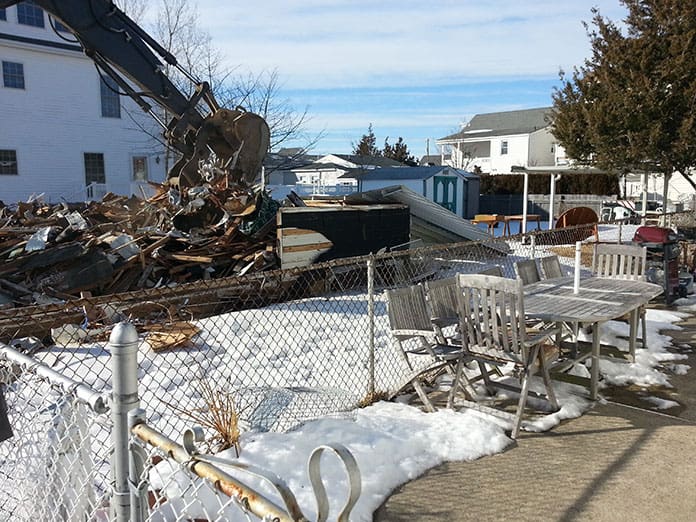
Northern Ocean: Farther north in Ocean County, Paul Daley, Office of Emergency Management Coordinator for Toms River, asserts that Toms River too is prepared for another Sandy.
“Toms River Township has done many things since Sandy to enhance safety and response to any type of manmade or natural disasters…The township has strengthened many areas,” Daley said.
For example, many homes rebuilt since Sandy have been constructed according to “today’s standards and laws.”
“Depending on if a house is in a flood zone….It may be built much higher to withstand flooding,” said Daley.
Officials also built the streets higher, the Army Core of Engineers rebuilt the beach and dune system to protect the barrier island and main land from flooding, Toms River Emergency Services purchased several high water rescue vehicles, and fire departments have made improvements to their Swift Water Rescue Training, he added.
Schools have also become better equipped to act as emergency shelters, staffed with personnel that have undergone hundreds of hours of training to learn how to run shelters.
The township also effectively disseminates information through social media and Nixle alerts to over 5,000 followers.
Informing the public is a priority on the township’s part, but residents too must do their part, Daley emphasized.
“Residents need to take responsibility. Make a plan. Speak to your family about what ifs. Know evacuation routes. Listen for emergency alerts. If you are asked to evacuate please do so. Have a plan for pets. Check on neighbors and the elderly,” Daley said. “Go to FEMA.gov. They have the tools to help you make plans and can help in many ways to prepare. Our office has many different kinds of preparedness materials. They can call 732-341-3267 and request assistance.”
Monmouth County: Several municipalities in Monmouth County have followed suit, such as Howell Township. According to Howell’s Director Office of Emergency Management, Victor Cook, the township is fully capable of handling the next hurricane that rolls in.
Since Sandy, Howell Township has made improvements to its levy and dams, established a Temporary Debris Management area to remove any debris that is causing a hazard, and opened a state-of-the-art emergency operation center within town hall, said Cook.
“This EOC has generator backup and serves as a backup communication center for Police/fire and EMS dispatching and 9-1-1 call answering,” he added.
In terms of basic hurricane preparedness, Cook noted that Howell has generators placed at all the critical infrastructures within the township. These generators are located “strategically along the Route 9 corridor to keep the signals operational and traffic flowing during the disaster.”
Much like Stafford and Toms River, Howell’s main priority also is keeping residents informed through social media and Nixle alerts.
“The Township keeps it residents informed of the impending storm as soon as it becomes available and updates are pushed out as warranted,” Cook said. “The Township’s main concern is keeping the residents informed and safe during the storm, by opening the roads as quickly as possible, restoring power, and sheltering the residents that have been displaced. We also work valiantly with the residents and FEMA to get the Township restored as quickly as possible.”
The township can only do so much to prepare for the storm; where they cannot serve residents, they advise residents to serve themselves by stocking up on food, water, and generators for at least three days, and heeding officials’ advice.
“The advice to be given to the residents is to listen to local government, about evacuations, follow the track of the impending storm, and safety warnings that are transmitted to the residents by the above communication methods the township uses,” Cook said.
-Chris Lundy contributed to this story


